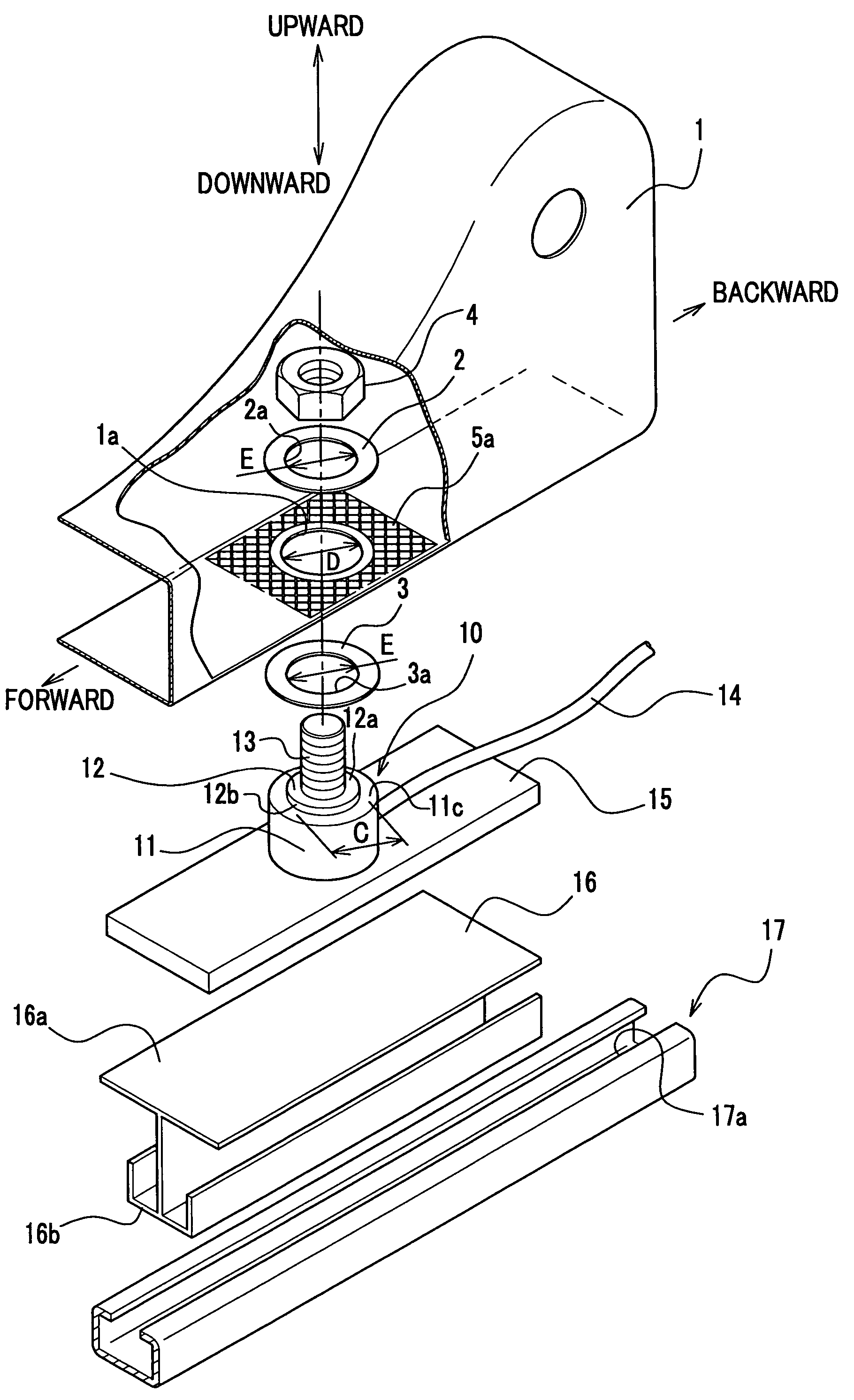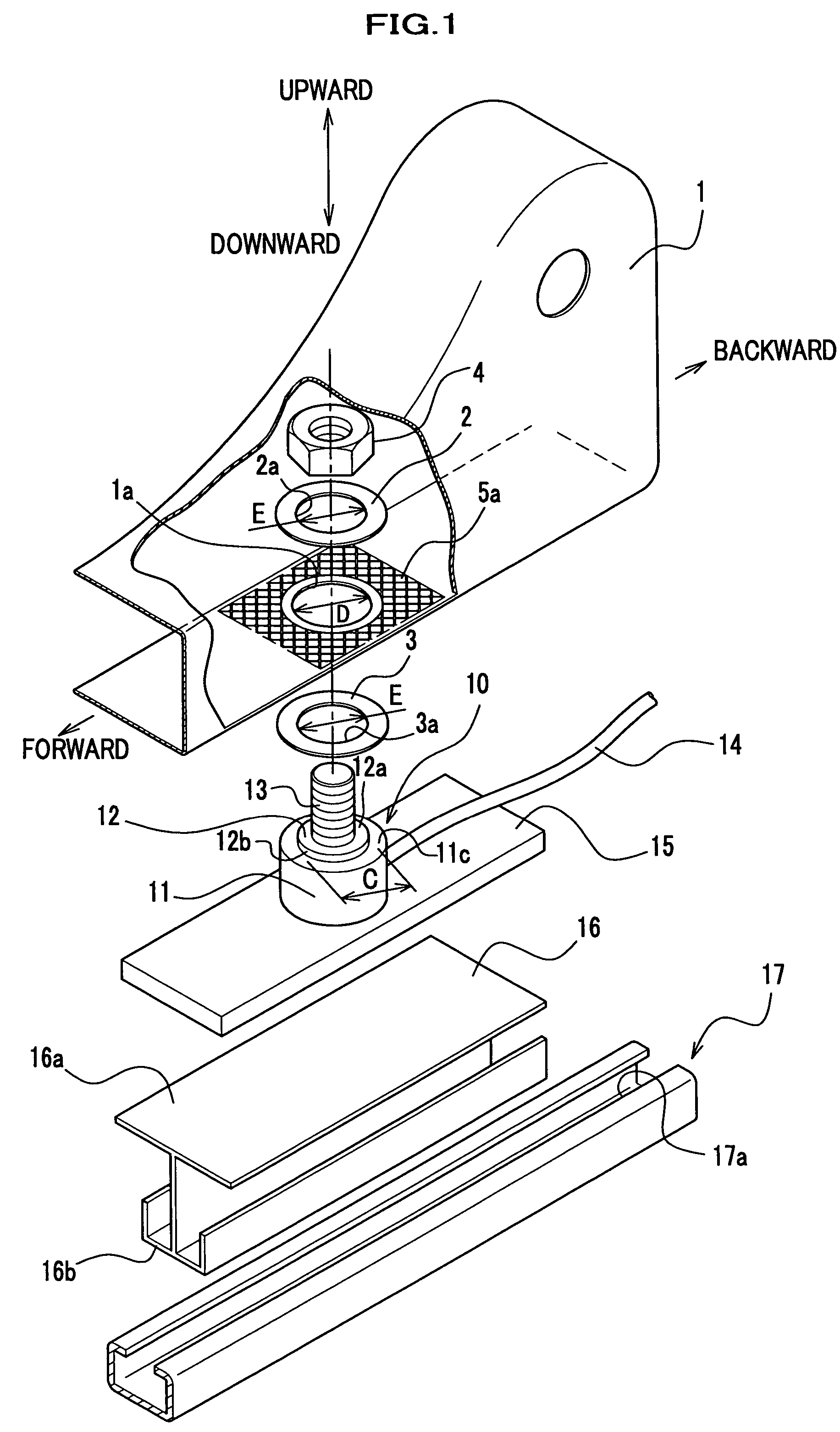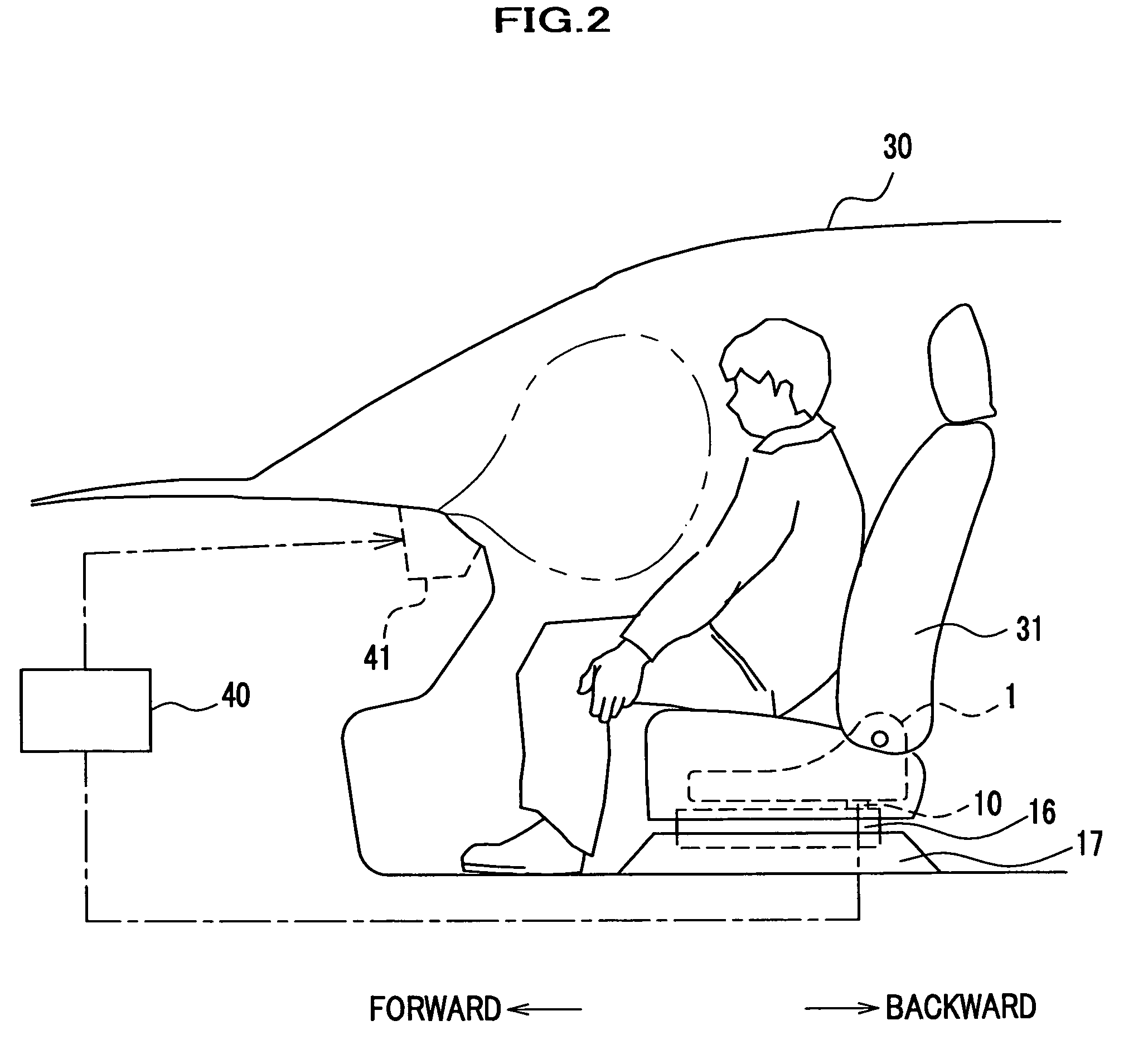Force sensor assembly
a technology of force sensor and assembly, which is applied in the direction of force/torque/work measurement apparatus, screws, instruments, etc., can solve the problems of affecting the accuracy of force sensor, affecting introducing more complex operation for tightening nuts, so as to reduce the accuracy of force measurement, facilitate the movement of force sensors, and facilitate the positioning of force sensors
- Summary
- Abstract
- Description
- Claims
- Application Information
AI Technical Summary
Benefits of technology
Problems solved by technology
Method used
Image
Examples
first embodiment
a. First Embodiment
[0035]As shown in FIG. 2, a force sensor assembly according to a first embodiment of the present invention is, for example, applied to a side seat 31 of a vehicle 30. The side seat 31 includes a seat frame 1 (a first support member) and a sliding frame 16. A force sensor 10 is interposed between the seat frame 1 and the sliding frame 16. A force which is detected by the force sensor 10 is transmitted to a control unit 40 as an electrical signal, which is used for controlling inflation of an air bag 41 by the control unit 40.
[0036]As shown in FIG. 1, the sliding frame 16 includes integrally formed two portions, a flange 16a and a sliding portion 16b. The flange 16a, which is shaped like a plate, supports a bracket 15. The sliding portion 16b, which has a substantially T-like shape, is supported by a seat rail 17, which is secured to a floor in a cabin. The seat rail 17 has a guide portion 17a running in forward and backward directions, in which a lower portion of t...
second embodiment
b. Second Embodiment
[0056]Description is given of a second embodiment of the present invention with reference to the accompanying drawings.
[0057]As shown in FIG. 8, force sensors 110 and a control unit 140 are disposed in a seat 131. When a passenger is seated on the seat 131, four pieces of the force sensors 110, which are mounted between a seat frame 101 and a sliding frame 116 in forward, backward, right and left directions, detect a force acting on the seat 131, which undergoes processing carried out by the control unit 140.
[0058]A signal of force detected by a force sensor 110 is used for an air bag device and a seat belt retractor (both not shown) provided for a side seat. The control unit 140 determines whether the passenger seated on the seat 131 is an adult, a child or an infant based on the signal, providing appropriate inflation of an airbag and pretension of a seat belt according to the passenger.
[0059]The control unit 140 including a CPU and ROM is mounted on the seat f...
third embodiment
c. Third Embodiment
[0103]A force sensor is not necessarily mounted between a seat frame and a sliding frame. It may be alternatively possible that the force sensor is placed between a member, which receives a force including a passenger and a seat, and a lower structural member disposed under a cushion of the seat. For example, it may be possible to place the force sensor between the seat and a floor panel (see FIG. 15).
[0104]A lower structural member disposed under a cushion of a seat, which is placed under a seat cushion 131a, is comparable to a seat frame 101, a sliding frame 116, a seat rail 117 as shown in FIG. 8, or a seat frame 201, a seat rail 217, a rail support member 212, a base frame 213 a seat bracket 214 and a floor panel 215 as shown in FIGS. 15 and 16.
[0105]As shown in FIGS. 15 and 16, a bracket 115 of a force sensor 110 is secured to the base frame 213, which is secured to the seat bracket 214 of the floor panel 215. A nut 104 is tightened onto a threaded portion 11...
PUM
 Login to View More
Login to View More Abstract
Description
Claims
Application Information
 Login to View More
Login to View More - R&D
- Intellectual Property
- Life Sciences
- Materials
- Tech Scout
- Unparalleled Data Quality
- Higher Quality Content
- 60% Fewer Hallucinations
Browse by: Latest US Patents, China's latest patents, Technical Efficacy Thesaurus, Application Domain, Technology Topic, Popular Technical Reports.
© 2025 PatSnap. All rights reserved.Legal|Privacy policy|Modern Slavery Act Transparency Statement|Sitemap|About US| Contact US: help@patsnap.com



